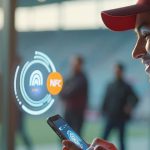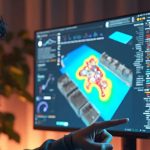Last year Gartner forecast that the enterprise and automotive Internet of Things (IoT) market would consist of 5.8 billion endpoints in 2020, a 21% increase from 2019. This reflects similar growth in the consumer market – where we have been seeing IoT devices become increasingly commonplace in our lives. At home, our WiFi routers have evolved to support additional protocols and networks beyond the new WiFi-6 standard like ZigBee and/or Z-Wave. They are becoming IoT hubs that allow us as consumers to control our environment with a range of smart devices such as lights, vacuum cleaners, coffee makers and appliances. We are managing these through personal assistants like Amazon Alexa or Google Home.
But with the Covid-19 pandemic, the emergence of a “new normal” is having a significant impact on the use and implementation of IoT. Governments to businesses have been looking to IoT as both a tool to help with everything from social distancing, to maintaining productivity in industries which have been disrupted by the pandemic.
In this article we explore the top trends in some of the most relevant IoT verticals.
IoT helps healthcare providers respond to the pandemic
Healthcare is clearly one of the most important industries in the context of the pandemic. Connected assets are improving how we manage scarce resources. Gathering data from sensors and equipment is helping healthcare authorities make better decisions when treating large numbers of people and to use scarce resources more effectively. We’re seeing wearables being used to track people’s temperature and other symptoms (so-called smart bracelets), as well as generating alarms for social distancing risk. Home medical devices can be connected to enable telemedicine and reduce the load on health systems. And finally, authorities have even been using autonomous robots, equipped with UV light, to disinfect high risk areas.
Industrial IoT brings together augmented reality with connected enterprises
Here two elements stand out which are increasingly playing a role together: augmented reality (AR) and the concept of the digital plant/connected enterprise. In terms of AR, there are two main types of applications. The first: displaying real-time data related to machinery. The second is for a hybrid view between the real world and computer-aided design (CAD) images with real time data. For example, operators on manual assembly lines can see guided instructions in their wearable glasses when working on manual assembly lines. In other words, it is helping people visualize and act upon the data generated by IoT systems. With these types of applications it also becomes easier to enable social distancing – for example by facilitating guided training, maintenance and supervision processes.
When talking about digital plants and the connected enterprise, businesses are aiming to connect every asset, and integrate data from their entire value chain and processes, in order to increase safety, productivity, revenue, and consumer satisfaction. The goal is to have real-time visibility on performance and risks, enabling them to make predictions to recommend actions. By doing this, they can achieve data-driven decisions, particularly with respect to their demand analysis and forecasting, which are currently the key elements to optimize production processes in challenging and uncertain times.
Fleet managers are using IOT solutions to achieve rapid ROI
This is probably one of the most interesting IoT applications with respect to the return-on-investment that organizations can expect. The challenge is to continue finding ways to optimize the operating costs of vehicles – for example with regard to maintenance, communication, and procurement. There are alternative options for devices that support different networks – cellular, satellite and low-power wide-area (LPWA) – key is to select the one with the lowest traffic cost according to signal coverage. And going beyond devices, fleet managers can use IoT to create driver performance monitoring systems that, along with the data from vehicles, allows organizations to foster and improve behaviors (such as vehicle speed) that will help reduce operational costs.
Smart agriculture comes to the fore
Drones, GPS/GNSS data, sensors and automated machinery are coming together to create precision agriculture systems that can improve the entire cycle from field preparation to harvest. Growers and agronomists have access to an increasing variety of dedicated solutions, such as those which use sensors to measure a tree’s water content, crop growth, and other environmental variables to optimize irrigation systems.
Considering the recent lockdown measures around the world, vertical farming (where growers produce crops in a controlled environment) may play an important role in the near future in strengthening food production and distribution. It would allow cities to cultivate food in controlled environments, by managing light, air flow and environment temperature.
Smart buildings will enable people to safely return to their offices
Sustainability is the keyword and businesses are achieving it through the integration of building management systems that sense indoor and outdoor environment variables to control resources. Beyond that, the idea is to centralize all the building subsystems: HVAC, lighting, surveillance, access systems and so on, to gain control, use resources more effectively, and implement predictive maintenance.
In the new normal we expect to see the deployment of systems that will promote social distancing. In addition, organizations will implement systems to improve air quality and ensure adequate ventilation – involving everything from sensors, filters, and other air purifiers to reduce the risk of being indoors during the pandemic.
Smart cities will be key to effectively manage people during the pandemic
Cities face major challenges in providing methods to guarantee social distancing, track potential Covid-19 cases, and manage emergency and medical resources. The first step is to connect and centralize assets and key data sources. Cities will need to measure everything from the usage of public transportation to the availability of medical resources, as part of the key KPIs in the future.
Meanwhile, computer vision and edge computing may well play a role in both educating citizens and keeping people informed of the current situation – for example advertising displays can share real-time information that can help ensure social distancing (for example how full a bus or train is).
Sports: Athletes look to performance data from connected devices
Athletic performance data is key, for both professional and amateur athletes. In addition to traditional heart rate sensors, athletes are increasingly using other types of wearables to track and review data related to their physical and tactical performance, as well as to track progress remotely with their teams during the quarantine.
Sensor based systems along with simulators inspired by the gaming industry, has enabled sports organizations to develop new forms of competitions for athletes who can’t be physically together in a stadium or other location – for example, see the success of virtual cycling races, where people compete from their own homes.
Retailers use IoT to introduce new contactless buyer experiences
Retailers have been focused on improving their customer journeys and online user experience for the past few years. Now payment systems based on contactless and user recognition have emerged to avoid lines, combined with other solutions to reduce interaction and contact during the buyer experience. Retailers are deploying autonomous robots to help with an increasing array of tasks, in particular reviewing a store’s inventory. Finally, stores are using IoT technology and connected devices to move their drive through concepts to reality.
Challenges remain when implementing IoT solutions
There are a variety of challenges that companies need to overcome when adopting these trends. Some of the common challenges that companies must face are: interoperability, performance, scalability, device management, availability, device evolution, security and data processing time. Overcoming these challenges, although complex, is not impossible.
As a first step, having a technology partner that can help you deal with these challenges and be a two-way bridge between the hardware world and the digital world is beneficial. This partner should not only understand how the digital world works, but also understands how IoT devices impact business, and can help you stay up to date with technology trends. Technology partners can help you collect data from all your IoT devices and assure that you can make data-driven decisions that add value to your business. Partners can assist with selecting the best technologies, building and maintaining platforms, setting up teams of data specialists, industry expertise, and even providing specialists that understand hardware, firmware and how these products should operate together.



